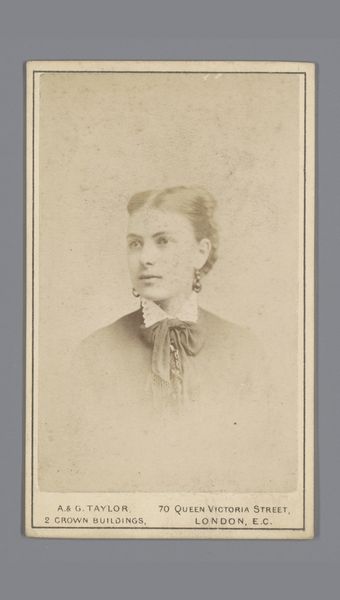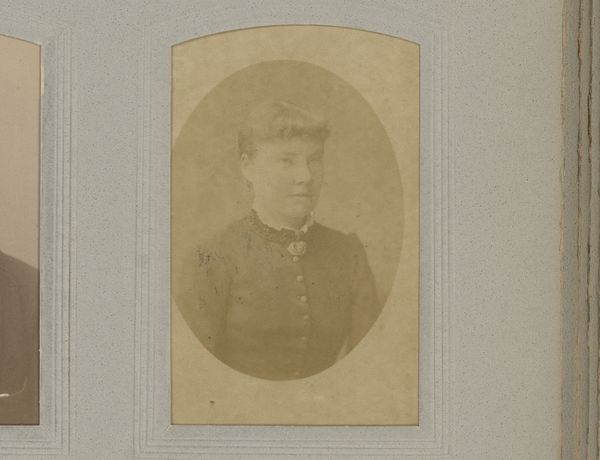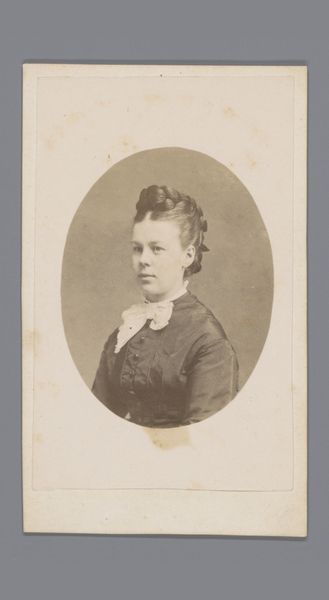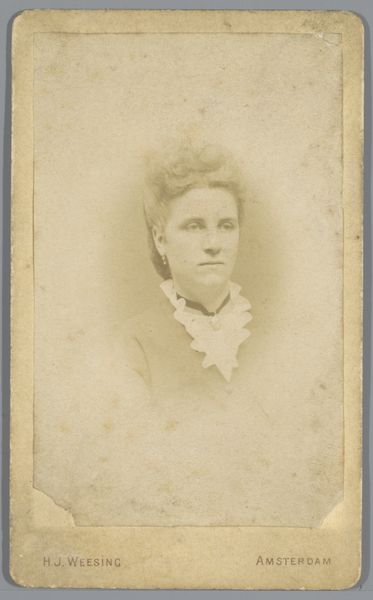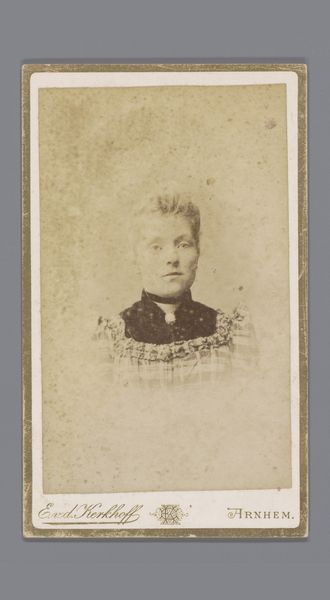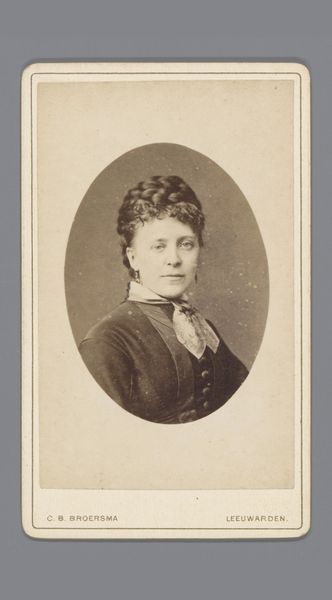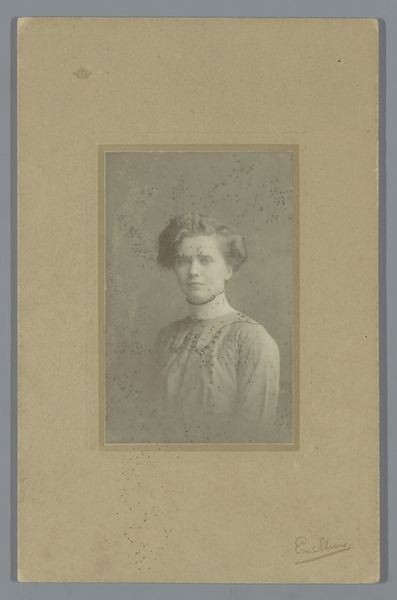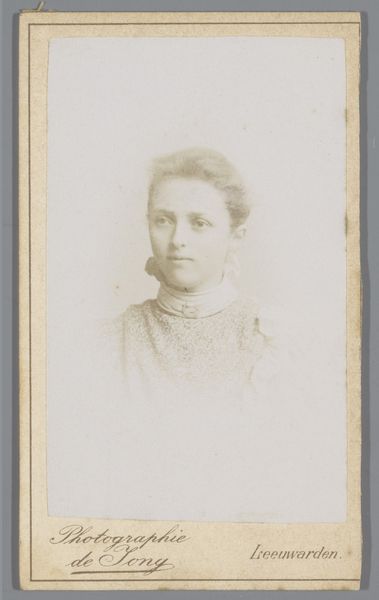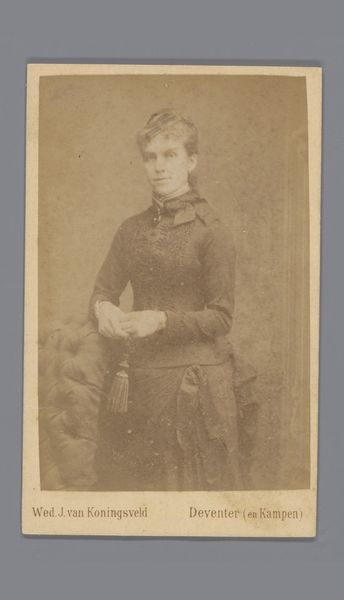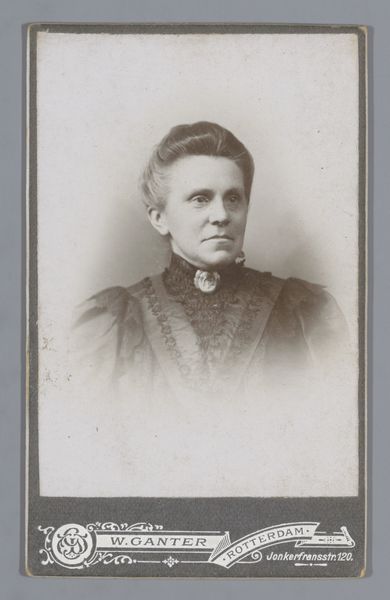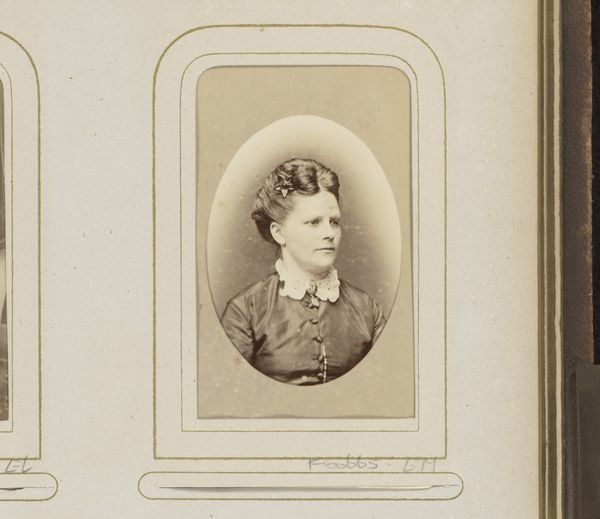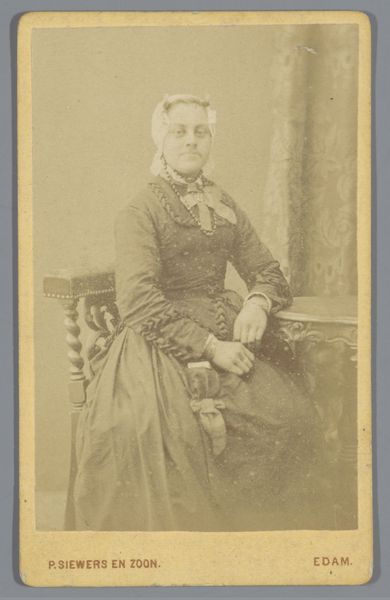
photography
#
portrait
#
photography
#
genre-painting
Dimensions: height 101 mm, width 63 mm
Copyright: Rijks Museum: Open Domain
Editor: We’re looking at “Portret van Christine Keyser Temmink,” a photograph from around 1860-1877 by Bernardus Bruining, part of the Rijksmuseum collection. There’s a stillness to her gaze… almost melancholic. How would you interpret this portrait? Curator: Melancholy, yes. The sepia tones contribute, certainly, but it’s also the controlled pose, the tight framing of the oval. Think of photography then: a rather new, painstaking medium. Consider what it meant to sit—motionless—for that duration. Editor: Almost like performance art! But for a camera instead of an audience. Curator: Precisely. A negotiation between reality and representation. The very slight asymmetry of her face hints at her human essence, while the perfectly buttoned dress and styled hair attempt a controlled, idealized image. It reminds me of Dutch Golden Age painting… except captured with light instead of pigment. Does that resonate? Editor: Yes! The formality makes so much more sense now, like a modern-day version of a Rembrandt portrait. But… what was it like to *be* Christine Keyser Temmink in that moment? Curator: That’s the enduring question with portraits, isn't it? We can project our own narratives, imagine her hopes, dreams, perhaps even her secret rebellions against the constraints of her time. That little bow in her hair… maybe it was a touch of youthful defiance. Or simply a fashionable flourish! Editor: A flourish, indeed! It's incredible how a single image can spark so many stories. Curator: I completely agree. Art serves to ignite our imaginations beyond what we might be used to.
Comments
No comments
Be the first to comment and join the conversation on the ultimate creative platform.
